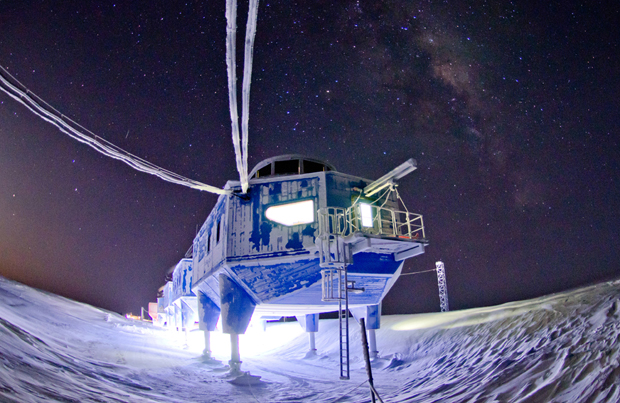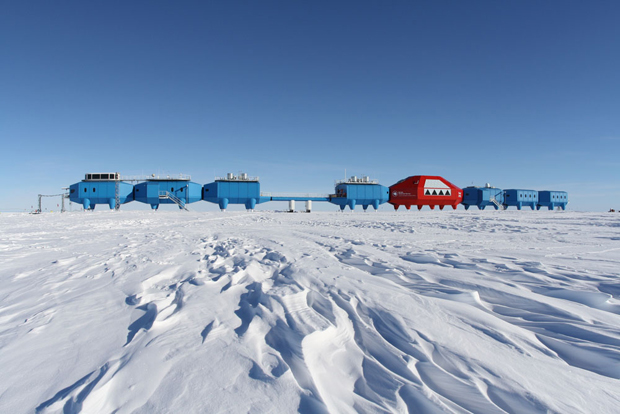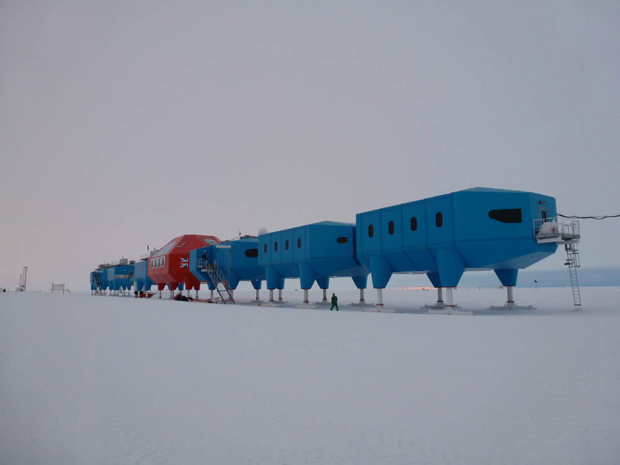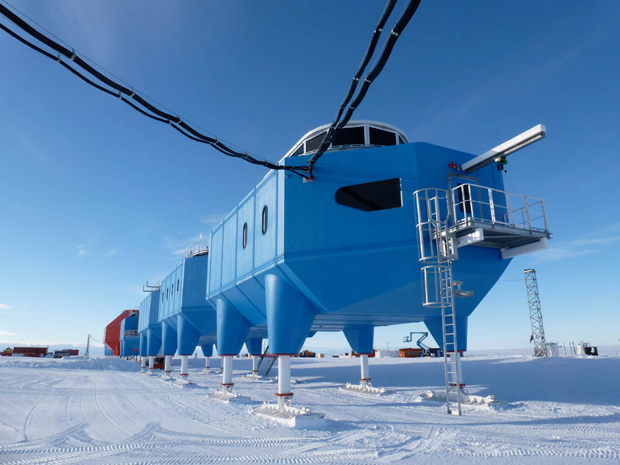
Hugh Broughton Architects create ice station on skis
Halley Research Station in the Antarctic should escape the fate of others - crushed and buried under the snow
In a land devoid of colour, seven giant blue drones stand on stubby feet. The site looks like something from the opening credits of Star Wars or, for those old enough to remember it, a 1960s Thunderbirds set, but it is in fact the Hugh Broughton Architects designed Halley Research Station in the Antarctic, which this month welcomes its first tranche of summer researchers.
The station will be home to up to 52 crew members over the summer and while the site may look childlike, its design is anything but simplistic. Roughly 900 miles from the South Pole, located on an ice sheet that is perpetually moving and folding into the Weddell Sea this is the sixth Halley Research Station.

The first four were buried and crushed by snow build up. Halley V, which is still in use, overcomes this problem by being jacked up on stilts. This allows it to be raised every year, though it requires the effort of 40 people over several days. And it doesn’t solve the issue of the relentless movement of the Brunt Ice Shelf towards the Weddell Sea, meaning that the area on which the station sits will eventually break off.

To overcome these issues, Broughton’s £25.8 million design is raised on hydraulically elevated feet to stay above the snowfall. The units are also built on skis so can be easily be pulled to a new location. Even the modules’ bright colours – strong blue for the science and sleeping quarters and a vivid red for the largest, central module, which forms the base’s social hub – were purposely chosen to help lift crew spirits in the dark days of winter.

Broughton acknowledges the sci-fi influences on his design, specifically the hydraulic legs and aerodynamic shape of Thunderbirds 2, International Rescue’s transporter. “I love the idea that 50 years down the line, in Antarctica, some of that conceptual thought from the 60s comes true.”
The project has made Broughton a sought-after expert in extreme architecture. He has created proposals for Indian, Spanish and South Korean Antarctic stations and has been commissioned to build a research station in Greenland for the American National Science Foundation. If you'd like to see other innovative solutions to extreme climactic conditions, check out our book Vitamin Green - a fantastic look at some of the most intelligent sustainable buildings and designs of the last few years.